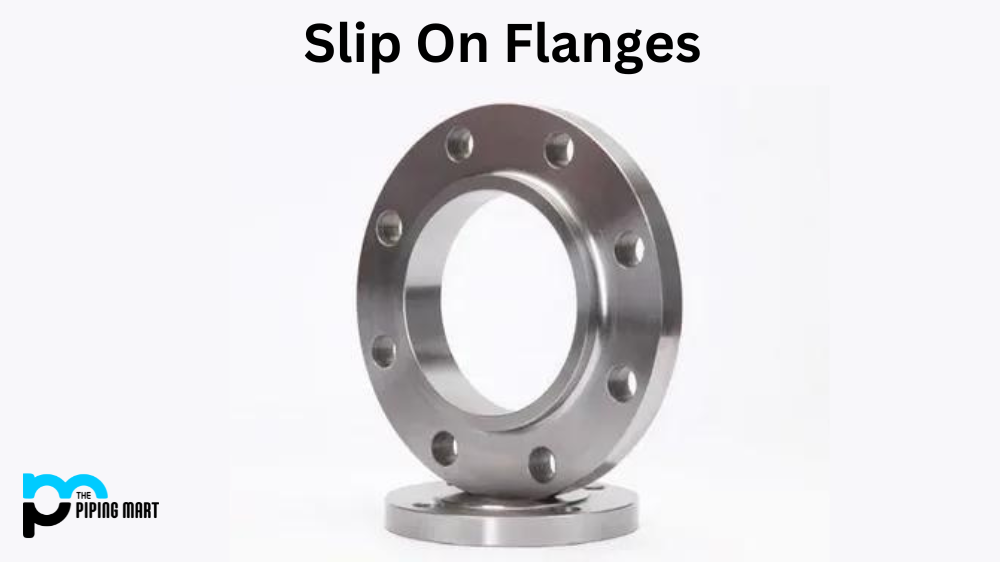Flanges are mechanical devices that connect pipes, valves, pumps, and more. They are used to join these components together to create a secure and leak-proof connection. Various types of flanges are available in the market, but two of the most commonly used ones are plate flanges and ring-type joint flanges. While both have the same purpose of joining pipes, there are some notable differences between the two. This blog will explore the differences between plate flanges and ring-type joint flanges.
What are Plate Flanges?
A plate flange is a type of flat-shaped flange mainly used to close the end of a pipe. They are typically made up of mild, stainless, or carbon steel. Plate flanges are used in low-pressure applications where welding is required, and they are known to be a cost-effective solution in various industries. One of the advantages of plate flanges is their versatility – they can be used in various applications and are easy to install. Even though they are available in different sizes, they are only suitable for a variety of pressures.
What are Ring-Type Joint Flanges?
Ring-type joint flanges are mostly used in high-pressure applications where there is a need for a tight seal. These flanges have grooves on their faces to accommodate the ring joint gasket positioned to prevent leaks. They are mainly used in the oil and gas industry and are made to withstand very high-pressure levels. Ring-type joint flanges are available in different standard sizes and materials.
Pros and Cons of Plate Flanges and RTJ Flanges
Plate flanges are inexpensive and easy to install. They are ideal for low-pressure applications and connecting equipment requiring regular maintenance. However, plate flanges are not suitable for high-pressure applications and are prone to leaking due to their flatness. RTJ flanges, on the other hand, are ideal for high-pressure applications, where they provide a tight seal. They are commonly used in the oil and gas industry, petrochemical plants, and power generation facilities. However, RTJ flanges are more expensive and difficult to install than plate flanges, and they require proper training and expertise to avoid damage.
Manufacturing:
Plate flanges are manufactured by cutting a circular plate and providing holes for welding. The outer diameter of the flanges is then machined and faced to ensure flatness. In contrast, ring-type joint flanges are manufactured using forged material. The groove for the ring joint gasket is formed by turning the outer diameter of the flange and inserting a ring in the groove. This ensures a tight seal under high pressure.
Applications of Plate Flanges and RTJ Flanges
Plate flanges are commonly used in the chemical, petrochemical, and food processing industries. They are also used in plumbing and irrigation systems. In contrast, RTJ flanges find applications in high-pressure processes in the oil and gas, petrochemical, and power industries. They are also used in high-temperature steam and water systems. In summary, plate and RTJ flanges are key in various industrial applications.
Installation:
The installation process for plate flanges is relatively simple. The flanges are welded onto the pipe ends, and the holes are aligned with the opposing flange before fastening them with bolts and nuts. Ring-type joint flanges require more preparation due to their design. The groove on the flange must be carefully measured to identify the right size and style of ring joint gasket to ensure a tight seal.
Conclusion:
In conclusion, the main difference between Plate Flanges and Ring-Type Joint Flanges is their purpose and design. Plate flanges are used in low-pressure applications and are cost-effective, versatile, and easy to install. Ring-type joint flanges are used in high-pressure applications, where a tight seal is necessary and are, therefore, mainly used in the oil and gas industry. Both flanges have advantages and disadvantages, and the choice of flange ultimately depends on the application’s needs and requirements.
Sakshee is a talented blogger, with a particular focus on the Business and Metal Industry. She is passionate about sharing her insights on various metal products and helping professionals to make a better decisions.




